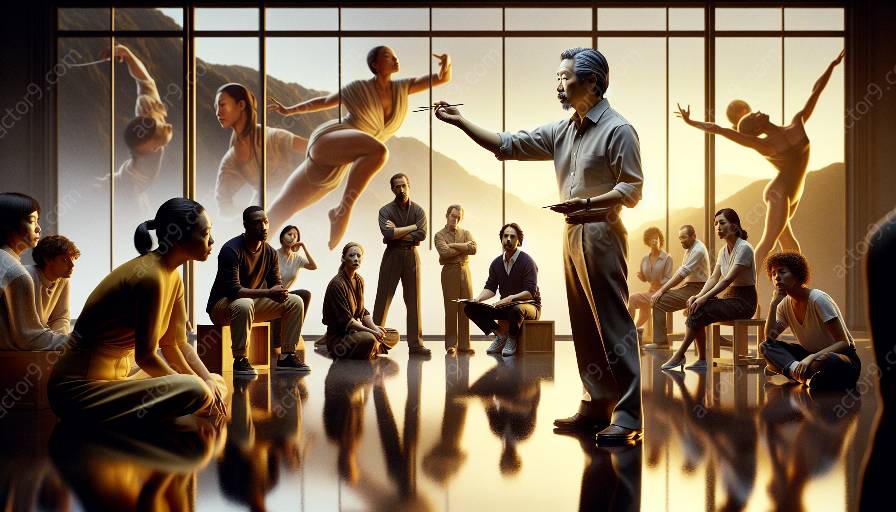Acting and physical theatre revolve around the effective portrayal of characters and emotions, and the study of body language can greatly enhance the teaching and learning of these disciplines. This topic cluster will explore the significance of body language analysis and its impact on the practice of physical theatre.
The Importance of Body Language in Acting and Physical Theatre
Body language plays a pivotal role in conveying emotions, intentions, and thoughts. In acting and physical theatre, performers use their bodies as a primary means of communication, often transcending the limitations of verbal language. Through the nuances of posture, gestures, facial expressions, and movement, actors can bring characters to life and immerse audiences in compelling narratives.
Enhancing Emotional Authenticity
Studying body language allows actors and physical theatre practitioners to develop a deeper understanding of non-verbal cues and expressions. By honing their ability to interpret and convey these cues, performers can imbue their portrayals with heightened emotional authenticity. This not only enriches the audience's experience but also facilitates a more profound connection between performers and their characters.
Effective Communication and Expression
Body language analysis equips actors with the tools to convey a wide range of emotions and intentions effectively. Whether it's through subtle micro-expressions or powerful bodily movements, understanding and utilizing body language enables performers to express complex emotions and ideas with clarity and impact.
Intersecting with Physical Theatre
Physical theatre is an art form that places a strong emphasis on the body as a mode of storytelling. By incorporating the study of body language, physical theatre practitioners can elevate their performances to new heights. The exploration of movement, spatial relationships, and physical expression becomes more nuanced and deliberate, enriching the narrative and thematic elements of physical theatre productions.
Expanding Expressive Capabilities
For practitioners of physical theatre, delving into the intricacies of body language enhances their expressive capabilities. Through the study of non-verbal communication, performers can expand the range of physical vocabularies at their disposal, enabling them to communicate complex narratives and concepts through movement and gesture.
Incorporating Psychological Depth
An understanding of body language enriches the psychological depth of physical theatre performances. By integrating insights from body language analysis, physical theatre artists can embody characters with greater authenticity, tapping into the subconscious layers of human behavior and emotion.
Teaching and Learning Applications
The study of body language offers valuable applications in both teaching and learning environments for acting and physical theatre.
Teaching Methods
For educators, incorporating body language analysis into acting and physical theatre curricula can enhance the pedagogical approaches to character development, emotional portrayal, and performance techniques. By guiding students through the exploration of body language, instructors can nurture a more holistic understanding of the physical and emotional dimensions of performance.
Performance Training
Students pursuing acting and physical theatre can benefit significantly from integrating body language analysis into their training. Understanding the nuances of body language empowers them to refine their physical expressiveness, deepen their character portrayals, and cultivate a heightened sensitivity to non-verbal communication in performance contexts.
Collaborative Exploration
The study of body language encourages collaborative exploration and experimentation within acting and physical theatre communities. Through workshops, exercises, and improvisational activities centered around body language, practitioners can engage in immersive learning experiences that foster creativity and empathy, ultimately enriching their artistic endeavors.
Conclusion
The study of body language holds transformative potential in enhancing the teaching and learning of acting and physical theatre. By delving into the intricacies of non-verbal communication, performers can elevate their expressive capabilities, deepen their portrayals, and forge profound connections with audiences. Through the intersection of body language analysis and physical theatre, the boundaries of artistic expression are expanded, nurturing a rich tapestry of emotive storytelling and captivating performances.




































